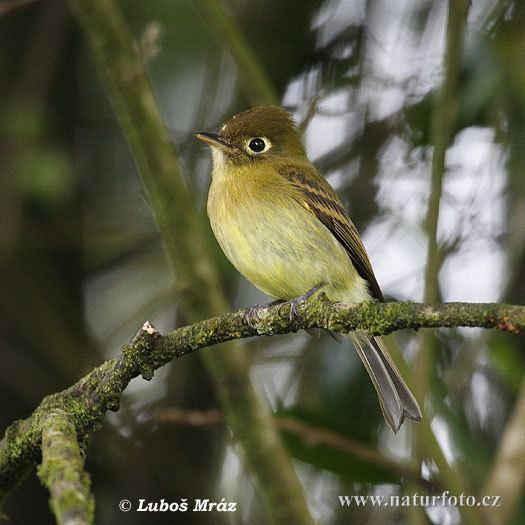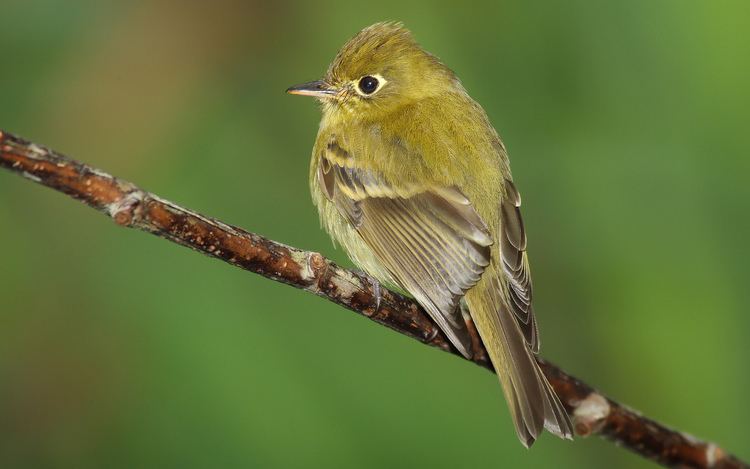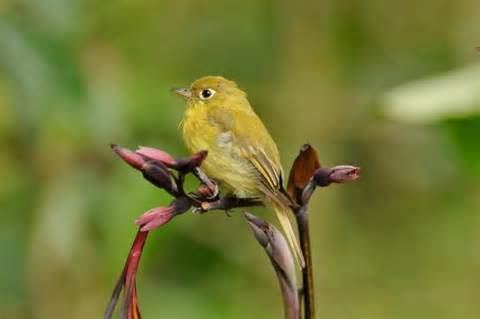Phylum Chordata Rank Species | Family Tyrannidae Scientific name Empidonax flavescens Higher classification Empidonax Order Passerine | |
 | ||
Similar Mountain elaenia, Paltry tyrannulet, Black‑capped flycatcher, Bird, Tyrant flycatcher | ||
Yellowish flycatcher prepares lunch
The yellowish flycatcher (Empidonax flavescens) is a small passerine bird in the tyrant flycatcher family. It breeds in highlands from southeastern Mexico south to western Panama.
Contents
- Yellowish flycatcher prepares lunch
- Description
- Distribution and habitat
- Behaviour and ecology
- References

Description
The yellowish flycatcher is 12.5 cm (4.9 in) long and weighs 12 g (0.42 oz). Its upper parts are olive-green and the underparts are yellow with an ochre tint to the breast. The wings are blackish with two buff wing bars. It has a white eye ring broadening into a small triangle behind the eye. Sexes are similar, but young birds are browner above and paler yellow below. The call is a thin seeep and the dawn song is a rapid repeated seee seee chit.

This species needs to be distinguished from migratory Empidonax species, since several species, including willow, alder and Acadian flycatchers pass through in the autumn. It has a more prominent eye ring than any migrant species, and despite that species’ name, is yellower below than yellow-bellied flycatcher.
Distribution and habitat

This species is found in cool mountain forest, especially at the edges, in clearings, along roadsides and near streams, and in second growth and bushy pastures. It breeds from 800 m (2,600 ft) to nearly 2,500 m (8,200 ft) altitude.
Behaviour and ecology
The deep cup nest is made of plant fibre and mosses, and placed 2–4.5 m (6.6–14.8 ft) high in a crevice in a tree trunk or earth bank. Nests are often in moss near streams. The typical clutch is two or three white eggs, marked with pale rufous speckles. Incubation by the female is 14–15 days to hatching, with another 17 days to fledging. They accept the eggs of brood parasites, and are therefore occasionally hosts of the bronzed cowbird. Yellowish flycatchers are active birds, usually seen alone when not breeding.
They eat insects, spiders and some small berries. Nestlings are fed exclusively insects, especially spiders. The prey is gleaned from the foliage, taken in flight in short sallies, or sometimes picked from the ground.
